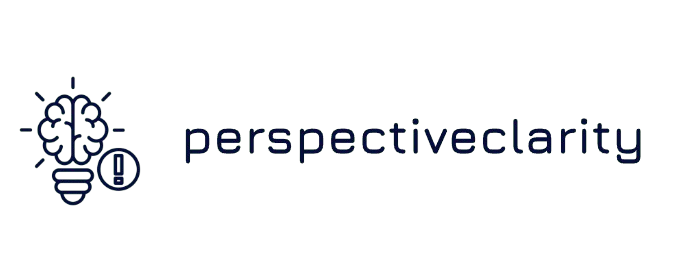The Best Fluffy Pancakes recipe you will fall in love with. Full of tips and tricks to help you make the best pancakes.

In today’s fast-paced workplace, motivating employees can feel like herding cats—challenging yet crucial for success. Enter goal-setting theory, the superhero of motivation strategies. When used effectively, it transforms mundane tasks into exciting quests, inspiring employees to chase their objectives like a kid chasing an ice cream truck.
But wait! Managers shouldn’t just throw goals at employees and hope for the best. There’s an art to it. Crafting the right goals can turn disengaged workers into productivity powerhouses. With a sprinkle of humor and a dash of clarity, managers can guide their teams toward success while keeping the atmosphere light and enjoyable. So, let’s dive into the essentials of goal-setting theory and discover how managers can motivate their teams without resorting to motivational posters of cats hanging from trees.
Understanding Goal-Setting Theory
Goal-setting theory highlights the impact of specific and challenging goals on performance. Managers must leverage this theory to unlock employee potential and enhance workplace productivity.
Key Principles of Goal-Setting Theory
Specific goals clarify expectations, guiding employees towards desired outcomes. Achievable goals maintain motivation while challenging employees to stretch their capabilities. Feedback plays a crucial role, offering insights into progress and areas for improvement. Research shows that employees perform better when they understand the correlation between their efforts and performance metrics. Setting time-bound goals creates urgency, further driving performance.
Importance in Employee Motivation
Goal-setting theory significantly influences employee motivation. Engaged employees are more likely to meet and exceed targets when they feel empowered by their goals. Clear goals foster a sense of ownership, encouraging proactive behavior. When goals align with organizational objectives, employees clearly see how their contributions impact the company. Effective goal-setting contributes to job satisfaction, promoting a motivated, high-performing team.
Setting Effective Goals

Setting effective goals involves more than just assigning tasks. Managers utilize specific strategies to engage employees and maximize performance.
SMART Goals Framework
SMART goals help establish clear and achievable targets. Goals should be Specific, Measurable, Achievable, Relevant, and Time-bound. Specific goals eliminate ambiguity and provide clear direction. Measurable targets offer quantifiable outcomes, allowing employees to track progress. Achievable goals ensure that employees remain motivated without feeling overwhelmed. Relevant goals align with team and organizational priorities, fostering a sense of purpose. Time-bound goals create deadlines, instilling urgency and focus. When managers adopt the SMART framework, they enhance the likelihood of reaching desired outcomes effectively.
Aligning Goals with Organizational Objectives
Aligning individual goals with organizational objectives creates a cohesive work environment. Employees understand how their contributions impact overall success. Communicating this connection strengthens commitment to shared goals. As employees see their work reflected in the company’s mission, motivation increases. Managers must consistently emphasize this alignment during meetings and performance reviews. This approach not only boosts morale but also drives accountability. When individual aspirations mirror organizational goals, teams work more harmoniously towards mutual success, resulting in enhanced productivity and job satisfaction.
Involving Employees in the Goal-Setting Process
Incorporating employees in the goal-setting process enhances engagement and fosters ownership over their work. Collaboration builds a sense of community and aligns personal objectives with organizational goals.
Benefits of Collaborative Goal Setting
Collaborative goal setting boosts motivation by creating a shared vision. Employees feel valued when their input shapes goals. This ownership often leads to increased commitment and accountability. Performance improves, as individuals understand how their efforts impact overall success. Additionally, teamwork in setting goals encourages open communication, enabling teams to address challenges together. The sense of belonging cultivated in this process leads to greater job satisfaction, reducing turnover.
Techniques for Employee Engagement
Effective techniques for engaging employees in goal setting include workshops and brainstorming sessions. Utilizing surveys allows managers to gather insights systematically, ensuring every voice matters. Regular check-ins promote dialogue surrounding progress and adjustments. Establishing accountability partners fosters support and encourages healthy competition. Incorporating gamification can make achieving goals more enjoyable, driving enthusiasm. Managers achieve better results when implementing these approaches that emphasize participation and collaboration.
Providing Feedback and Support
Providing feedback and support is crucial for employee motivation. Managers must prioritize continuous feedback to keep employees engaged and focused on their goals.
Importance of Continuous Feedback
Continuous feedback plays a significant role in goal achievement. Regular updates help employees understand their performance relative to established objectives. This understanding fosters an environment of trust and transparency. Feedback can highlight areas for improvement and reinforce positive behaviors. When employees receive constructive feedback, they are more likely to adjust their efforts accordingly. Studies show that frequent feedback leads to higher motivation levels and clearer understanding of expectations.
Strategies for Supporting Employees
Supporting employees involves various effective strategies. Managers can establish regular check-in meetings to discuss progress and address concerns. Offering resources, such as training programs or mentoring, enhances skill development. Recognition of achievements, both big and small, boosts morale. Encouraging collaboration fosters a sense of community within the team. Finally, creating an open-door policy invites employees to share their thoughts and seek assistance. These strategies contribute to a supportive workplace culture that enhances motivation and performance.
Monitoring Progress and Adjusting Goals
Monitoring progress is essential for maintaining employee motivation. Managers benefit from regularly assessing each employee’s advancement towards their goals. Tracking performance metrics such as deadlines and quality ensures alignment with expectations. Frequent reviews also provide opportunities for constructive feedback, enhancing engagement. Tools like progress charts and performance dashboards can help visualize achievements and identify areas for improvement.
Keeping Track of Goal Achievement
Keeping detailed records of goal achievement creates accountability. Employees should document their progress consistently, noting challenges encountered and milestones reached. Using specific metrics aids in evaluating success. Regular one-on-one meetings allow for discussions about ongoing efforts and any necessary support. Managers can encourage the use of digital tools that track tasks, making performance more transparent for everyone involved.
When and How to Adjust Goals
Adjusting goals becomes necessary when challenges arise or priorities shift. Managers should recognize when goals become unrealistic due to changing circumstances. Aspects like workflow disruptions or resource availability warrant reevaluation. Employees should feel empowered to suggest changes during feedback sessions, fostering collaboration. Setting new timelines or redefining objectives can inject new enthusiasm into the workplace while maintaining motivation.
Conclusion
Utilizing goal-setting theory effectively requires managers to be proactive and engaged. By crafting specific and challenging goals that resonate with employees, they can foster a culture of motivation and accountability. Regular feedback and support are crucial in this process, ensuring employees feel valued and connected to their objectives.
Monitoring progress and being flexible with goal adjustments can keep motivation high, allowing employees to navigate challenges with confidence. When managers prioritize collaboration and communication, they create an environment that not only drives performance but also enhances job satisfaction. This approach ultimately leads to a more motivated and productive workforce, benefiting both employees and the organization as a whole.
